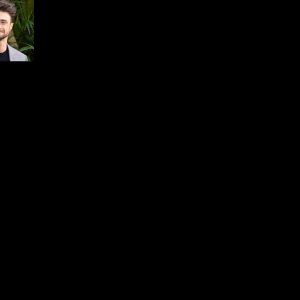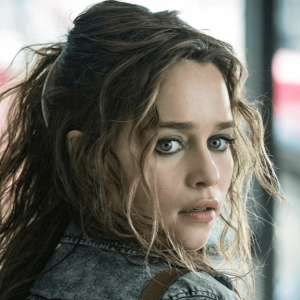Pink’s Beauty and Skincare Routine: Tips for Radiant Skin Revealed!
By [Your Name], Entertainment & Lifestyle Journalist
Pop princess Pink isn’t just making headlines for her powerhouse vocals and gravity-defying performances — she’s also turning heads for her glowing, age-defying skin. Known for her unapologetic attitude and edgy aesthetic, the multi-Grammy-winning artist serves more than just stage presence — she’s also a glowing example of how self-care is the real MVP.
So, how does Pink — real name Alecia Beth Moore Hart — keep her skin looking so flawless while on tour, raising a family, and being oh-so-boss in the music industry? We’re diving deep into Pink’s beauty and skincare secrets that keep her radiance on lock. Spoiler alert: Her glow is no accident!
Keep scrolling for spilling tea and tips that could change your glow game for good.
Clean Skin is Always In
One of Pink’s golden rules? Clean skin is the best canvas. After countless backstage makeup looks and full-face glam, Pink stays committed to thoroughly cleansing her skin, especially after performing under hot lights. She’s said in past interviews that she never — and we mean never — goes to bed with makeup on.
Remember: double cleansing is trending for a reason. First with an oil-based cleanser to break down makeup and dirt, followed by a gentle foaming cleanser to remove impurities. It’s a staple move in Pink’s skincare Bible.
Hydration Is Her Non-Negotiable
Hydration is Pink’s go-to skincare savior. Between flying city to city and late-night performances, her skin takes a beating. She’s obsessed with layering her skin with hydrating serums containing hyaluronic acid — everyone’s fave moisture magnet — and finishing it off with a thick, nutrient-rich moisturizer.
Fun fact: Pink also swears by facial mists throughout the day. Whether she’s hitting rehearsals or hanging with her kids, a quick spritz refreshes her complexion and keeps the glow going strong. One of her rumored favorites? Rosewater mist. It’s soothing, smells divine, and delivers dewy realness.
No-Shame Self-Care Sundays
Pink isn’t shy about showing off her self-care rituals — and trust, it's #goals. Face masks are a must in her weekly routine. She alternates between clay masks to detox and sheet masks to nourish, depending on what her skin is craving.
She also lives for facial massage tools like jade rollers and gua sha stones — hot tools in the skincare world that boost circulation and create a natural contour. Yup, that cheekbone highlight? It’s partly from a solid lymphatic drainage session.
Sun Protection Is Her BFF
Believe it: sunscreen is non-negotiable in Pink’s skincare regimen. Whether it’s a beach day with the fam or just a grocery store run, she always applies broad-spectrum SPF 30 or higher.
“I’m outside a lot with my kids,” she shared in a recent red carpet interview. “I want to protect my skin — I earned every one of these laugh lines, and I’d like to keep them in style.”
The takeaway? Sunscreen isn’t just for summer — it’s for every single day. If it’s good enough for Pink, it’s a must for us.
Clean Beauty for the Win
In true rockstar fashion, Pink keeps it real when it comes to her beauty product choices. She’s been known to lean toward clean, eco-conscious brands that prioritize ingredients over frills. Think cruelty-free, fragrance-free, and no harmful chemicals. She’s also tipped fans off to liking brands such as Drunk Elephant and Tata Harper — cult faves for skincare lovers and ingredient snobs alike.
It fits perfectly with her global activism and passion for mindful living. Her skincare and makeup choices go beyond the surface — they reflect her values. Beauty with a purpose? We love to see it!
Less Makeup, More Confidence
Even though she slays every glam photoshoot, Pink is a major advocate for bare skin and embracing natural beauty. On social media, she frequently posts makeup-free selfies that spark waves of support from fans worldwide. Her message? You don't need to hide behind beauty products to feel beautiful.
“I look like a peeled potato some mornings, and I’m still beautiful,” she joked in an Instagram Live. Inspo: level 100.
Healthy Lifestyle, Healthy Skin
While she’s known for her daredevil acrobatics on stage, Pink’s skin owes a lot to her strong commitment to overall wellness. The star is big on yoga, clean eating, tons of water, and solid sleep. She swears by drinking herbal tea and staying hydrated, especially on tour.
She’s all about nourishing her skin from the inside out: think greens, lean proteins, and superfoods. “Your face tells the story of your lifestyle,” she’s said. “I want mine to say I’m alive and loving myself.”
Final Glow-Up Thoughts
From trending skincare tools to celeb-favorite beauty products, it’s clear Pink has achieved next-level glow status. Her routine is empowering, real, and totally attainable — without filters or facades.
So if you’re scrolling for celebrity skincare hacks that deliver glowing, youthful, radiant skin? Pink just gave you the ultimate masterclass.
Stay tuned to more A-list skincare musts, and don’t forget to hit refresh — your glow-up is waiting.
Keywords: Pink skincare routine, celebrity beauty secrets, radiant skin tips, clean beauty, hyaluronic acid skincare, Pink beauty tips, natural glow, SPF daily ritual, healthy skincare habits, clean beauty trend 2024.
Want more celeb skincare scoops? Follow us for the glow-up buzz you can’t miss!

